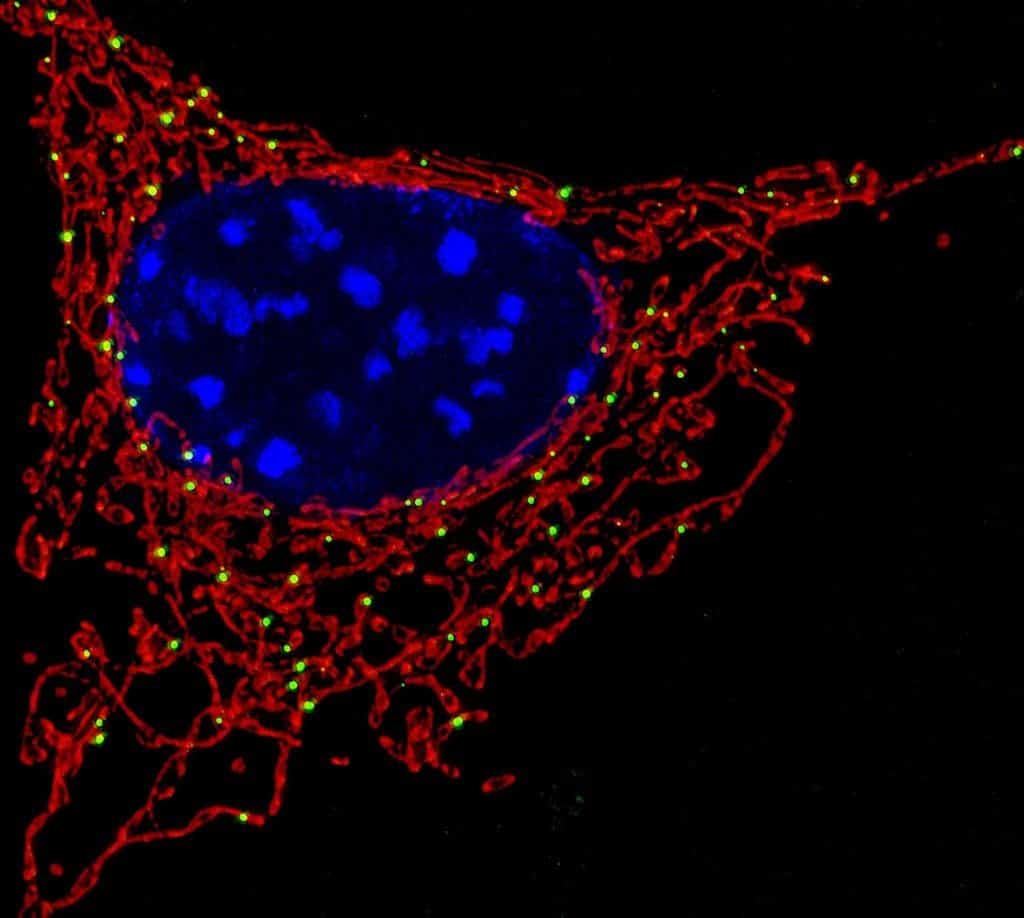Mitochondria are built up of many individual bioelectric units that generate energy as an array — pretty much like a Tesla electric car battery.

The prevailing theory up to now was that mitochondria, the organelles that produce energy for living cells, worked like one of the batteries in your remote: though a chemical reaction inside a single chamber or battery cell.
However, a new study from the University of California, Los Angeles (ULCA) finds that this isn’t the case. Mitochondria, they explain, work like arrays, with many, many battery cells that work to manage energy safely and provide fast access to high-intensity current.
Team effort
“Nobody had looked at this before because we were so locked into this way of thinking; the assumption was that one mitochondrion meant one battery,” said Dr. Orian Shirihai, a professor of medicine in endocrinology and pharmacology at the David Geffen School of Medicine at UCLA and senior author of the study.
All cells in our bodies, with the exception of red blood cells, contain one or more mitochondria — sometimes up to several thousands of them. These organelles (cellular organs) are covered in a smooth outer membrane and boast a wrinkled, inner membrane. The folds of this inner membrane (called ‘cristae’) extend all the way to the center of the organelle.
Up to now, it was assumed that the role of this wrinkly texture on the inner membrane was simply to increase the surface area and thus help increase the energy output.
However, the world works in mysterious ways; California has taken a leading role in renewable energy and e-vehicles, and that decision made the current study possible.
“Electric vehicle engineers told me about advantages of having many small battery cells instead of one large one; if something happens to one cell, the system can keep working, and multiple small batteries can provide a very high current when you need it,” Shirihai said.
Tesla vehicles are some of the best-known e-vehicles right now, so let’s take that as an example. Tesla battery packs are an array of 5,000 to 7,000 small battery cells (depending on the exact model). These batteries, while individually small, work in tandem to allow vehicles to charge rapidly, cool down more effectively, and to provide large amounts of power quickly when needed (such as when accelerating).
Using conventional microscopy, Shirihai observed that cells can function well with a small number of very long mitochondria, which didn’t fit in with what the engineers were telling him. So, instead, he started looking for the array inside individual mitochondria. Together with his colleagues, he developed a technique to map the voltage on the membrane of mitochondria in living cells with much better accuracy than ever before. Dane Wolf (first author) and Mayuko Segawa (second author), two UCLA students, optimized a form of high-resolution microscopy to peer into the interior of mitochondria and watch energy production and voltage distribution inside the organelle.
“What the images told us was that each of these cristae is electrically independent, functioning as an autonomous battery,” Shirihai said. “One cristae can get damaged and stop functioning while the others maintain their membrane potential.”
The inner membrane of the mitochondria loops back outward between each cristae, the team reports, and clusters of proteins form in this area and determine the boundaries of individual cristae. Previous research has shown that without these proteins, the mitochondria are more susceptible to damage, but not why; Shirihai’s study found why.
These proteins, the study explains, act as insulators between cristae. In effect, they turn a huge battery into a collection of smaller ones. If these proteins disappear, the mitochondria stop acting like battery arrays.
“The battery experts I had originally talked to were very excited to hear that they were right,” Shirihai said. “It turns out that mitochondria and Teslas, with their many small batteries, are a case of convergent evolution.”
The findings may help broaden our understanding of mitochondria, the roles they play in cells and in aging, and even shed light on new treatments for diseases and medical complications that involve disturbances in mitochondria or cristae structure.
The paper “Individual cristae within the same mitochondrion display different membrane potentials and are functionally independent” has been published in The EMBO Journal.



